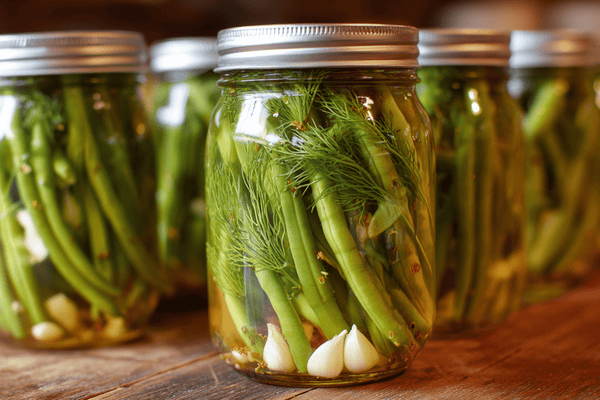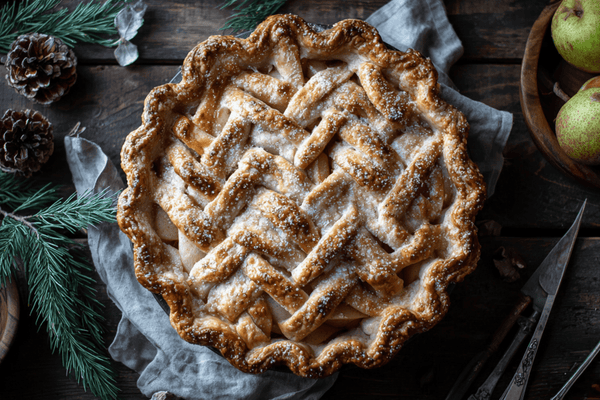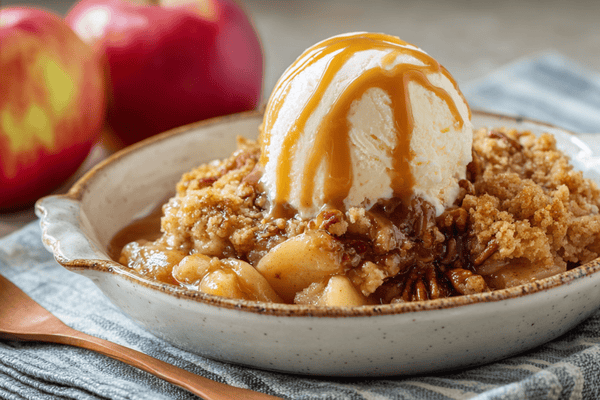 The world of knives can feel pretty intimidating when you first enter it; there are so many different types of knives. Many people don’t even realise this until they actually start shopping for a blade and even then, they find themselves confused by the names and styles of all of the tools on offer.
The world of knives can feel pretty intimidating when you first enter it; there are so many different types of knives. Many people don’t even realise this until they actually start shopping for a blade and even then, they find themselves confused by the names and styles of all of the tools on offer.One of the most popular types of Japanese knives is the gyuto which is a multi-purpose knife very similar to the western chef’s knife; great at chopping and slicing.
If you’ve been thinking about updating your knife collection and want to include a gyuto knife then it’s a good idea to familiarise yourself with this blade in order to know how to get the best out of it. This is the ultimate guide to this popular Japanese knife; so let’s shine the spotlight on the gyuto.
Table of contents
- What Is a Gyuto Knife?
- What Are Gyuto Knives Used For?
- How Is a Gyuto Knife Different From a Western Chef's Knife?
- Steel
- The Build of the Blade
- But They're Still Pretty Similar, Right?
- The Anatomy of the Gyuto Knife
- Types of Steel Used For Gyuto Knives
- Cladding
- Gyuto Handles
- Tang
- How to Sharpen a Gyuto Knife
- Final Thoughts
What Is a Gyuto Knife?
 A gyuto knife is a very similar type of knife to the western chef’s knife, which most of us are accustomed to seeing, if not using. Interestingly, the word gyuto translates into English as cow sword and that’s pretty fitting since this is a knife primarily designed for cutting meat.
A gyuto knife is a very similar type of knife to the western chef’s knife, which most of us are accustomed to seeing, if not using. Interestingly, the word gyuto translates into English as cow sword and that’s pretty fitting since this is a knife primarily designed for cutting meat.That said, the gyuto is incredibly versatile and is often the go-to knife for a chef owing to how many different foods it can cut. These knives have a slightly longer than average blade which means that they have a slightly more front-balanced design and this is perfect for how they are used.
What’s more, the design of the gyuto knife means that it’s ideally suited to a variety of cutting techniques. If you regularly use the rocking motion method then the shape of the blade works very well for this but its balance also means that it’s great for simple back-and-forth cutting as well.
The average length of a gyuto knife is around 21cm although there are those that are as large as 31cm and as small as 15cm. It’s important to choose a gyuto whose blade is the right size for the tasks you’ll be doing but it’s just as important to find a knife that feels comfortable for you.
What Are Gyuto Knives Used For?
 The gyuto knife was originally made for cutting meat. But one of the best things about these knives is that they are perfect for a whole host of other jobs. You can use them for cutting fruits and vegetables just as easily.
The gyuto knife was originally made for cutting meat. But one of the best things about these knives is that they are perfect for a whole host of other jobs. You can use them for cutting fruits and vegetables just as easily.These knives have a very pointed tip that allows you to do some surprisingly precise jobs especially when you consider that this is such a large knife. What’s more, this feature means that they’re still good even when you have to work in a tight space.
The gyuto knife has a flatter heel than some other knives which is one of the reasons that it’s so good for the rocking motion technique. But, if you wanted to do something like tap chopping, the length of the blade allows for this too. It’s no wonder that they call it the ultimate multi-purpose knife!
You will notice that the gyuto knife is a lot lighter and much thinner than its western counterpart, the chef’s knife. This means that, when you are using the gyuto, it will feel much more precise and agile.
How Is a Gyuto Knife Different From a Western Chef's Knife?
So, it’s obvious by now that a gyuto knife is most commonly compared to the western chef’s knife, and there are a lot of similarities. But we will look at these in more detail later on. Let’s start by looking at what makes these knives different from one another.
Steel
One of the main key differences between the western chef’s knife and the gyuto knife is that they are both made with different types of steel. Like all traditional Japanese knives, the gyuto is made from high-carbon steel. This is the same metal you would see in your santoku knife or kiritsuke, for example. Although there are Damascus steel gyuto knives, this isn’t true Damascus, as you can see from our article here.High carbon steel like this ensures that the knife has a much sharper blade that is able to retain its edge for a lot longer. Moreover, this sharpness gives the knife far better precision. These knives are incredibly durable and hard and will stand the test of time although you might notice that they are a little more brittle than their western cousins.
Western chef’s knives, on the other hand, are made from a much softer type of steel; usually stainless steel. This is actually another type of Japanese metal and originally came from the city of Seki in Japan. However, when you buy a modern western chef’s knife, the steel could have come from almost anywhere in the world. German stainless steel is a common material that is renowned for its durability and practicality.
The Build of the Blade
Another thing that makes a gyuto knife different from a western chef’s knife is how the blade is built. As we mentioned earlier, the gyuto is slightly more forward-balanced than other types of knives, including the western chef’s knife. The reason for this is so that the user can achieve more agility and precision when they are cutting.What’s more, you will notice that the gyuto has a markedly thinner and more lightweight blade than its European counterpart. The length of the two knives is pretty similar and there isn’t one that is normally longer than the other. The narrow, light design of the gyuto knife makes it ideal for chopping and dicing even smaller pieces of food.
Now, one of the major differences between, not only the gyuto and the chef’s knives but also between most Japanese and European knives is the bevel. Most Japanese knives, including the gyuto, are made with a single bevel blade whereas the chef’s knife, and other western knives have a double bevel blade.
What difference does this make to how the blade performs? Well, with a single bevel, the knife is much more easily able to retain its edge and allows for a much cleaner cut.
But They're Still Pretty Similar, Right?
Yes! There are a lot of things that make the gyuto knife and the chef’s knife close cousins, that’s why they’re so often compared to each other. In fact, it’s not uncommon for knife companies to make their gyuto and chef’s knives in a very similar manner with the main difference being the core.Both western knives and gyuto knives are great when it comes to versatility. They are both considered to be multi-purpose blades especially when compared to other things in the kitchen like your bread knife or cleaver, for example. They’re both ideal for cutting meat, veggies, proteins and things like cheese.
It is for this reason that it’s super highly recommended to have at least one of these two types of knives in your kitchen. Which you choose will depend on the build you prefer and how you like to use a knife but a lot of people opt for the gyuto since it is such a sharp and precise blade.
The Anatomy of the Gyuto Knife
 Getting to know your kitchen equipment is essential if you want to get the most out of it. When it comes to knives, a lot of people think that they’re all pretty much the same. In fact, I’ve even heard people say that the only difference they know between knives is the size. To the untrained eye, this isn’t such an obscure notion and you might not notice the intricacies. That’s why we want to get you better acquainted with the anatomy of the gyuto knife.
Getting to know your kitchen equipment is essential if you want to get the most out of it. When it comes to knives, a lot of people think that they’re all pretty much the same. In fact, I’ve even heard people say that the only difference they know between knives is the size. To the untrained eye, this isn’t such an obscure notion and you might not notice the intricacies. That’s why we want to get you better acquainted with the anatomy of the gyuto knife.
Types of Steel Used for Gyuto Knives
As we mentioned earlier, gyuto knives are largely made using high-carbon steel. But there isn’t only one type of this metal. When buying a gyuto knife, you’ll want to look at exactly which type of steel has been used. The guide below will tell you the advantages of each.VG10 steel is a type of high-carbon steel that is often used in the construction of Japanese knives. One of the most obvious benefits of this type of steel is that it retains its edge incredibly well. You’ll also find that knives made from VG10 are much longer lasting and can stand up to intense challenges without needing to be sharpened all that often.
SG2 steel is another type of high carbon steel only this alloy also contains vanadium. The reason for this is that it makes it much more resistant to general wear. Moreover, these knives tend to be far higher up on the Rockwell Hardness Scale; sometimes up to 64 which is way harder than VG10. The advantage of this is even better edge retention but you should keep in mind that it is more difficult to sharpen.
AUS10 steel also contains vanadium and is one of the sharpest types of high-carbon steel to come out of Japan. Even better, this steel will hold its edge far better than anything else so it makes a great choice for professional chefs who will get a lot of use out of their gyuto knives.
Cladding - No, we aren’t talking about what goes on the exterior walls of your house to protect them and make them look pretty. Cladding, where gyuto knives are concerned, is applied in order to protect the core material.
The core of your gyuto knife will be made from some kind of steel, whether that is high-carbon or stainless steel. However, over the top of this, the gyuto manufacturer will add cladding to protect this, leaving a small portion exposed which is used to cut.
In much the same way the gyuto knives are made from different types of steel, you also have choices when it comes to the type of cladding.
Damascus cladding is super popular and you will see this used for a whole host of Japanese knives, not just the gyuto. The reason that it is so well loved is because of the watery pattern which can make for a very eye-catching knife. This material is made by folding various steel alloy layers together which creates a beautiful pattern.
Kurouchi cladding is another common type for the gyuto and is great if you prefer a more rustic-looking blade. The great thing about this type of cladding is that it can be made in different ways; forging, spraying, lacquering and more.
Gyuto Handles
One of the most important things to look at when considering the anatomy of any blade is the handle. Generally speaking, when you buy a gyuto knife, it will have one of two different handle types.Wa handles are the most traditional type of Japanese knife handle and they are usually much lighter than the blade itself. The advantage of this is that the knife is much better balanced, especially when you consider that front heavy blade. Normally, if you buy a gyuto with a wa handle, it will have a full tang with both sides of the handle firmly attached with adhesive.
Yo handles are more commonly seen on western chef’s knives but it’s not impossible to find gyutos with this handle style. These are a lot heavier than wa handles and rather than having the sides of the handle glued to the tang, they’re secured using rivets. They’re a great choice if you prefer a slightly heavier knife and something that’s more well-balanced.
Tang
We mentioned the tang in the previous section, but what exactly is it? Well in essence, the tang is the part of the blade that continues into the handle. You will see gyuto knives with either full or partial tangs. A full tang is much more secure and goes right through to the end of the knife. They tend to be a lot more durable and this means that they are able to withstand a lot more pressure.
How to Sharpen a Gyuto Knife
It’s important to stay on top of sharpening your knives as they simply won’t perform how you expect them to if they’re not in tip-top condition. The good thing is that you can sharpen your gyuto knife at home with pretty good results. Of course, there are also professional knife sharpening services that you can use, if you prefer. In any case, it is essential to keep your gyuto sharp so that you can achieve better precision.If you want the best results then you will need to buy a high-quality whetstone. These are sometimes called sharpening stones, just to avoid confusion. Once you have this, you can follow these instructions to effectively sharpen your gyuto knife at home.
● Start by finding a flat surface for your whetstone.
● Make sure you are familiar with the optimal angle for your knife. The manufacturer will give you details on this although generally speaking, a gyuto should be sharpened to about 45 degrees.
● Take hold of the knife handle, keeping the thumb on the spine, applying firm, consistent pressure.
● Take your other hand and use a few fingers to apply pressure on the cutting edge.
● Start at the heel of the blade and work your way towards the point.
● You’ll need to slide the blade forward over the whetstone, moving it away from yourself. When you come to the edge of the stone, lift the blade and pass it over again. Do this as many times as you need.
● Make sure to retain the sharpening angle on every pass.


